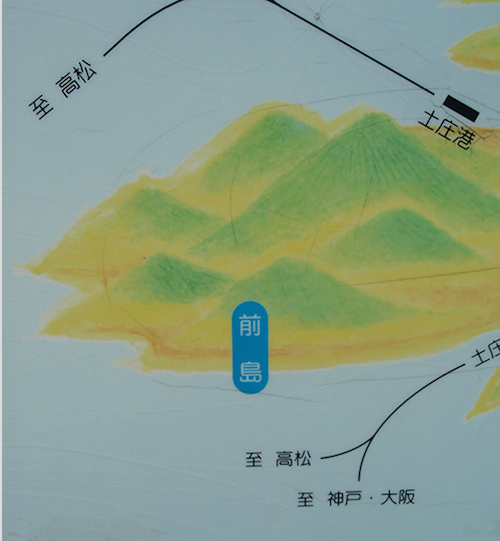133. The "Arriving" Radical: 至
You have arrived at a discussion of the "arriving" radical 至!
This shape is on duty in only two Joyo kanji:
至 (875: to arrive at; to; most; solstice)
致 (1573: to do; cause; invitation)
The English radical name "arriving" (or alternatively "arrive" or "reach") clearly derives from the primary definition of the 至 kanji.
Similarly, the Japanese radical name いたる comes from いた•る, the Joyo kun-yomi of 至. When the radical slides to the left side of a character, as in 致, then いたるへん fits.
The six-stroke shape of the radical has no variants, though the radical certainly looks thinner in 致.

Photo Credit: Eve Kushner
This ferry map features the names of some destinations, each preceded by 至, which is pronounced いたる and means "to" in this case. That is, the 至 before 高松 (たかまつ), 神戸 (こうべ), and by implication 大阪 (おおさか) indicates that the boats will go to those places.
The ferries depart from 土庄港 (とのしょうこう: Tonosho Harbor, where 庄 is non-Joyo) on 前島 (まえじま: Maejima Island), which is in the Inland Sea and is part of Kagawa Prefecture on Shikoku.
The Etymology of 至
Originally, says Henshall in his newer edition, the 至 character depicted an arrow that someone shot from a bow and that came to rest vertically, sticking up out of the ground (土). (I assume the strokes above 土 represent the arrow.) Henshall comments, "The arrow has reached a certain point and stopped, giving the meaning 'stop.' The arrow has also gone as far as it can reach, hence the meaning '(maximum) limit.'"
